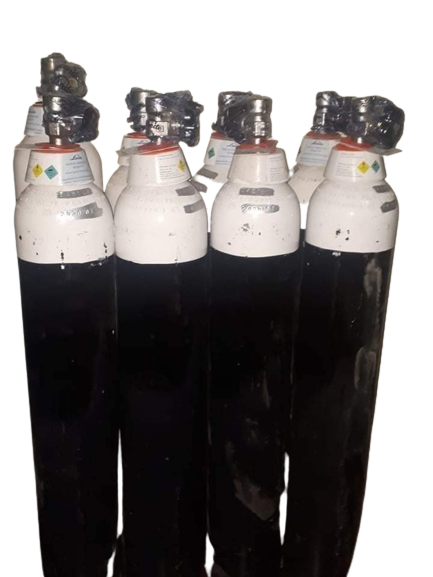

At a basic level, oxygen is a colorless, odorless, and tasteless gas (at room temperature). Two oxygen atoms combine to form an oxygen molecule called O2. For animals, breathing is the main purpose of oxygen. Physiologically, our breathing and circulatory systems transport oxygen to our cells and organs.
Oxygen is essential for breathing because the body uses it to “burn” food molecules. Animals breathe in oxygen when they breathe in and release carbon dioxide when they breathe out. Oxygen accounts for almost 21% of all gases in the air, and most of the remaining gases are physiologically inert nitrogen. Although we breathe in 21% of oxygen, the person who exhales contains approximately 16% of oxygen. The body uses only about a quarter of the oxygen it breathes in, so there is enough surplus for artificial respiration. Because of this, artificial respiration works and can help patients whose breathing is insufficient to sustain life.
Medical oxygen Cylinder has become one of the key life-saving tools in the fight against COVID-19, causing patients to develop pneumonia and hypoxemia, as well as low blood oxygen levels. Ensuring the safety of this basic medical element is the focus of global society. When to use medical oxygen? How is this done? Which countries produce the most? How is it produced? We use four graphics to answer these questions.
Lungs In many cases, the Sars-CoV2 virus can infect the respiratory tract and cause pneumonia. In severe cases, this can lead to hypoxemia, which is the main cause of death in COVID19 patients. Blood oxygen saturation (SpO2) greater than 95% is the normal range for children and adults. Oxygen saturation values below 90% are considered dangerous. According to the World Health Organization (WHO), approximately 20% of COVID patients need oxygen. treatment. To prevent respiratory failure. Oxygen can be administered in a variety of ways.
A nasal cannula (medical tube passing through two nostrils) or a simple mask or reservoir mask can be provided for patients with mild to moderate hypoxia. In these cases, the medical personnel will deliver 1 to 15 liters (3.3 gallons) of oxygen per minute to assist the patient in breathing normally.
In cases requiring more oxygen, medical practitioners can place the patient on a high-flow nasal cannula, continuous positive airway pressure (CPAP), or a ventilator. In these instances, the patient receives up to 100% of their breathing oxygen from these sources. With a ventilator, a continuous oxygen supply is necessary to sustain the patient’s life. Where does medical oxygen originate from? Certain countries, particularly those with low- and middle-income statuses, encounter hypoxia.
India has seen a record number of cases in the past few weeks, using approximately 17 million cubic meters (600 million cubic meters) of oxygen per day. The Indian Ministry of Health only produces about 7 million cubic meters of oxygen. This shortage means that, according to World Bank data, in 2019, thousands of people with critical oxygen needs from 102 countries in the medical oxygen import and export trade chain were expelled and killed, of which 10 countries exported as much as 80%. The largest net exporter is Belgium with USD 23.6 million, followed by France with 14%. Portugal is followed by 8%.
We use cookies to enhance your browsing experience, serve personalized ads or content, and analyze our traffic. By clicking "Accept All", you consent to our use of cookies.